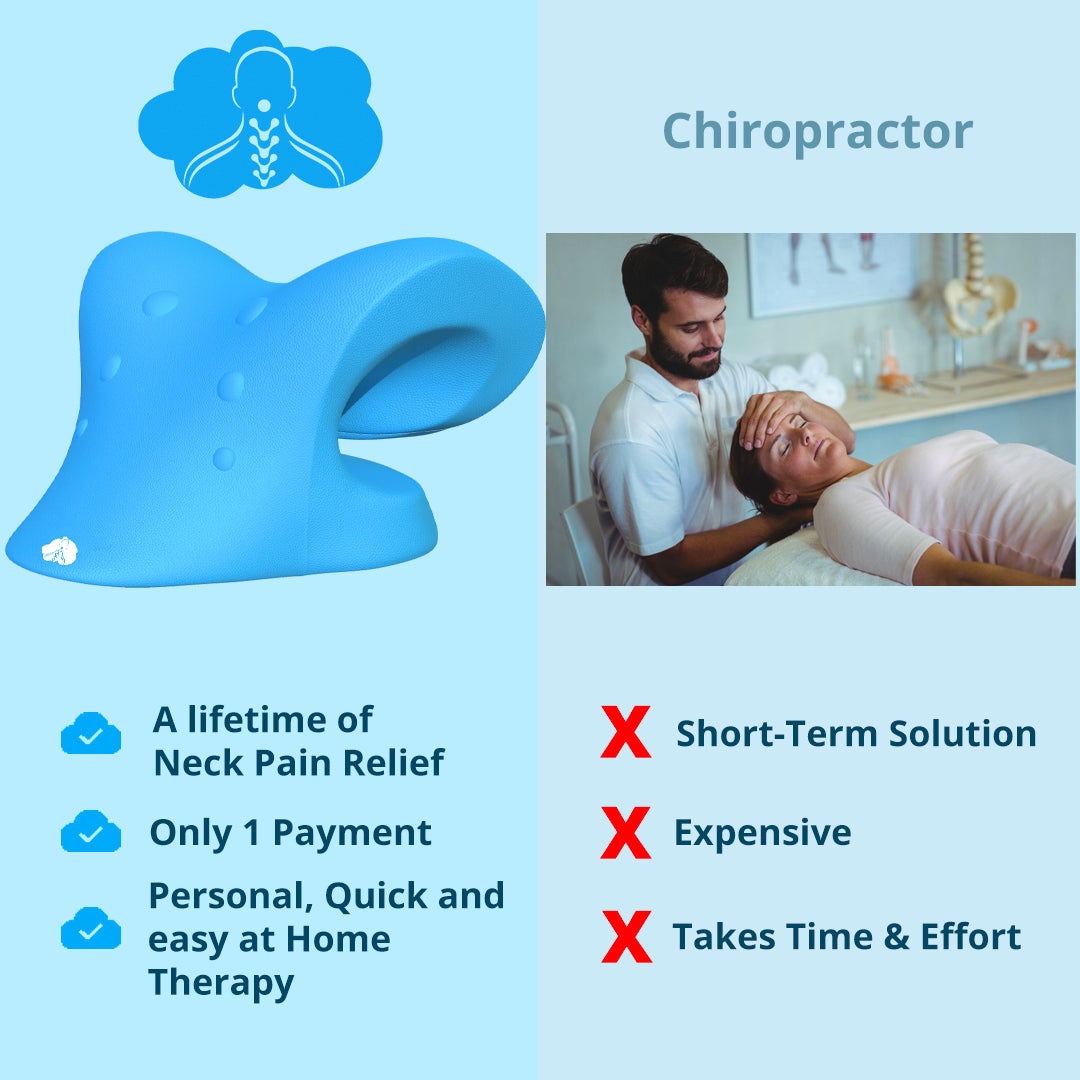Boost Your Pose and Decrease Neck Discomfort with the Neck Cloud
Boost Your Pose and Decrease Neck Discomfort with the Neck Cloud
Blog Article
Neck Pain in the Office: Determining Risk Aspects and Applying Ergonomic Solutions
Neck discomfort in the work environment is a prevalent problem that can affect staff member wellness and performance. By understanding the various threat factors adding to neck discomfort and executing ergonomic options, organizations can develop a much more conducive workplace. Recognizing these variables is essential in developing targeted approaches to relieve discomfort and stop future injuries. Addressing ergonomic worries not only boosts staff member health and wellness yet additionally advertises general task contentment and efficiency.
Usual Sources Of Neck Discomfort
Neck pain in the workplace is a common problem that can be associated to numerous usual causes. Among the key offenders is bad pose, which typically arises from extended periods of resting inaccurately at a desk or workstation. This can cause strain on the neck muscle mass and joints, creating discomfort and pain. Additionally, recurring movements such as constant bending, twisting, or getting to can additionally add to neck pain gradually. Straining the neck by holding it in an awkward position for prolonged durations, like nestling the phone between the ear and shoulder, can intensify the problem (neck cloud).

Ergonomic Threat Aspects
Poor ergonomics in the workplace can significantly add to neck pain among staff members. Variables such as improper desk height, poor chair assistance, and unpleasant positioning of computer screens can all play a role in the growth of neck discomfort. When employees are compelled to sit for extensive durations ready that strain their neck muscle mass, it can result in tightness, discomfort, and also a lot more major bone and joint concerns in time.
Additionally, inadequate ergonomic methods can result in workers taking on awkward poses while functioning, such as craning their necks to see a computer system display or getting to annoyingly for a computer mouse or keyboard. neck cloud. These recurring movements and abnormal positions can put unnecessary anxiety on the neck and bordering muscle mass, bring about pain and reduced productivity

Workdesk Setup Recommendations
To reduce the risk of neck discomfort and discomfort, there are a number of workdesk setup recommendations that workers need to consider. Make sure that the computer system monitor is positioned at eye level to protect against straining the neck by looking up visit this page or down.
It is also important to have ample lighting to reduce eye strain, as scrunching up your eyes or leaning onward can cause neck tension. Arrange the desk format to maintain often utilized things within arm's reach, restricting the demand for recurring twisting or getting to motions. By applying these desk arrangement suggestions, staff members can produce an extra ergonomic workspace that sustains neck health and minimizes the threat of establishing job-related neck discomfort.
Extending and Workout Tips
Simple desk-friendly stretches can assist minimize neck discomfort and avoid tightness. Neck rolls, shoulder shrugs, and mild side-to-side neck stretches are reliable in alleviating tension.
Setting tips or making use of apps that motivate motion can aid establish a routine stretching regimen. By focusing on these activities, you can enhance your physical well-being, reduce the risk of neck pain, and boost your general performance in the workplace.
Relevance of Regular Breaks
In a fast-paced workplace where needs can contribute to physical stress like neck pain, developing a regimen that stresses the relevance of normal breaks is vital (neck cloud). Taking regular breaks throughout the workday is important for preventing and easing neck discomfort. Long term periods of resting or recurring jobs can bring about muscle stress and tightness in the neck and shoulders. By incorporating short breaks right into the job routine, workers can decrease the threat of establishing neck discomfort and improve general convenience and efficiency.
Regular breaks enable employees to rest their muscular tissues, stretch, and turn, preventing rigidity and advertising far better circulation. Encouraging staff members to take brief breaks every 30-60 minutes can help in reducing the accumulation of tension in the neck and shoulders. These breaks can additionally serve as a chance for employees to exercise leisure techniques or gentle neck stretches, better advertising musculoskeletal health. Executing a culture that values and focuses on regular breaks can have a considerable effect on reducing neck discomfort and boosting total health in the workplace.
Final Thought
To conclude, attending to ergonomic threat variables and implementing correct workstation arrangements are vital in decreasing neck discomfort in the workplace. By promoting great posture, providing ample this support, and motivating normal breaks and stretches, companies can produce a much healthier and extra efficient workplace for employees. Focusing on worker well-being with ergonomic options is key to preventing pain and enhancing overall office fulfillment.
Neck discomfort in the work environment is a common problem that can influence worker wellness and performance. By identifying and attending to these common a fantastic read causes of neck pain in the office, employers can take proactive actions to create a more ergonomic and comfortable work setting for their staff members.
Poor ergonomics in the office can substantially add to neck discomfort among employees. By applying these desk configuration suggestions, employees can create a much more ergonomic workspace that sustains neck wellness and decreases the risk of developing work-related neck pain.
Neck rolls, shoulder shrugs, and mild side-to-side neck stretches are effective in easing tension.
Report this page